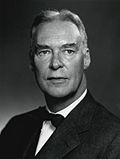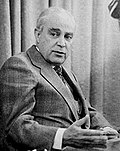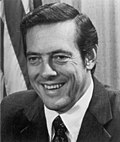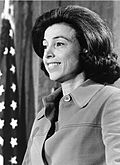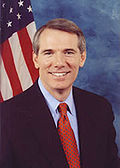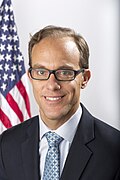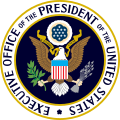 Seal of the Office of the U.S. Trade Representative | |
 Flag of the Office of the U.S. Trade Representative | |
| Agency overview | |
|---|---|
| Formed | 1962 |
| Preceding agency |
|
| Headquarters | Winder Building 600 17th St. NW Washington, D.C. |
| Employees | 200 |
| Annual budget | $73 million (FY 2021) |
| Agency executive |
|
| Parent agency | Executive Office of the President |
| Website | ustr |
The Office of the United States Trade Representative (USTR) is an agency of the United States federal government responsible for developing and promoting United States foreign trade policies. [1] Part of the Executive Office of the President, it is headed by the United States Trade Representative, a Cabinet-level position that serves as the United States president's primary advisor, negotiator, and spokesperson on trade matters. USTR has more than two hundred employees, with offices in Geneva, Switzerland, and Brussels, Belgium.
Contents
- Organization
- Leadership
- Office of WTO and Multilateral Affairs
- History of the United States trade representative
- Issue areas
- Reports
- National Trade Estimate
- The Special 301 Report
- Notorious markets
- List of United States trade representatives
- See also
- References
- External links
USTR was established as the Office of the Special Trade Representative (STR) by the Trade Expansion Act of 1962, leads trade negotiations at bilateral and multilateral levels, and coordinates trade policy with other government agencies through the Trade Policy Committee [2] (TPC), Trade Policy Committee Review Group [3] (TPCRG), and Trade Policy Staff Committee [4] (TPSC). Its areas of expertise include foreign direct investment, commodity agreements, trade-related intellectual property protection, and trade disputes before the World Trade Organization. Based in Washington, D.C., Jamieson Greer is the current United States trade representative.

